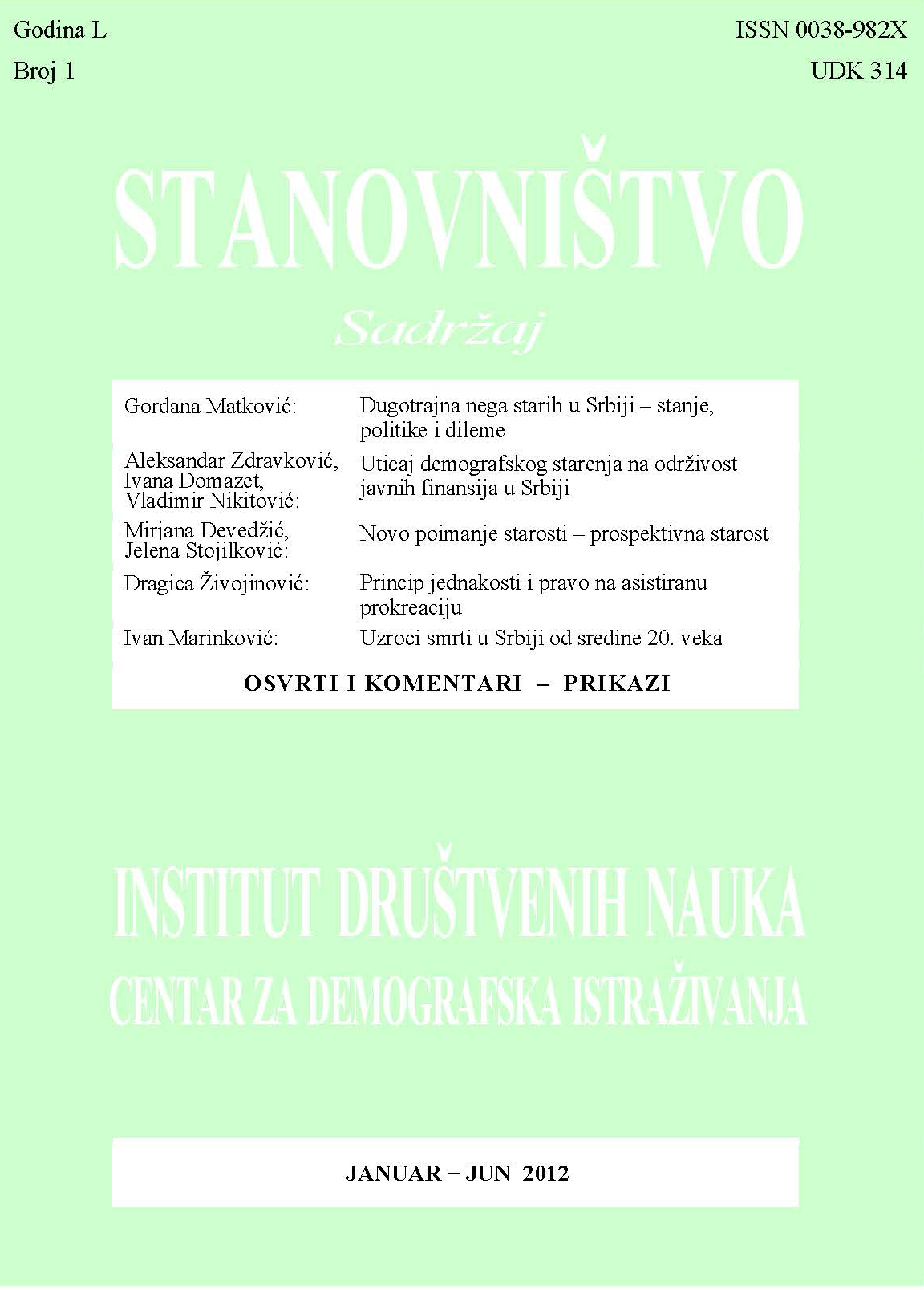Uzroci smrti u Srbiji od sredine 20. Veka
Causes of Death in Serbia Since the mid-20th Century
Author(s): Ivan Ž. MarinkovićSubject(s): Demography and human biology
Published by: Институт друштвених наука
Keywords: mortality; causes of death; Serbia; 1950-2009; municipality
Summary/Abstract: The structure of the leading causes of death in Serbia has considerably changed in the last half century. Diseases which presented the main threat to the population a few decades ago are now at the level of a statistical error. On the one side are causes which drastically changed their share in total mortality in this time interval, while others have shown stability and persistence among the basic causes of death. Acute infectious diseases "have been replaced" with chronic noninfectious diseases, due to the improvement of general and health conditions. One of the consequences of such changes is increased life expectancy and a larger share of older population which resulted in cardiovascular diseases and tumors to dominate more and more in total mortality.Convergent trends in the structure of the leading causes of death in Serbia from the middle of the 20th century are the reasons why there are considerably fewer diseases and causes with a significant rate in total population mortality at the beginning of the 21st century. During the 1950s, there were five groups of diseases and causes which participated individually with more than 10% of population mortality (infectious diseases, heart and circulatory diseases, respiratory diseases, some perinatal conditions and undefined states) while at the beginning of the new century there were only two such groups (cardiovascular diseases and tumors). Identical trends exist in all European countries, as well as in the rest of the developed world.The leading causes of death in Serbia are cardiovascular diseases. An average of somewhat over 57.000 people died annually in the period from 2007 – 2009, which represents 55.5% of total population mortality. Women are more numerous among the deceased and this difference is increasing due to population feminization. The most frequent cause of death in Serbia, after heart and circulatory diseases, are tumors, which caused 21,415 deaths in 2009. Neoplasms are responsible for one fifth of all deaths. Their number has doubled in three decades, from 9,107 in 1975 to about 20,000 at the beginning of the 21st century, whereby tumors have become the fastest growing cause of death. Least changes in absolute number of deaths in the last half century were marked among violent deaths. Observed by gender, men are in average three times more numerous among violent deaths than women. In the middle of the 20th century in Serbia, one third of the deaths caused by violence were younger than 25 and as many as one half were younger than 35 years old. Only one tenth (11%) of total number of violent deaths were from the age group of 65 or older. At the end of the first decade of the 21st century (2009), the share of population younger than 25 in the total number of violent deaths was decreased four times (and amounted to 8%). At the same time, the rate of those older than 65 or more quadrupled (amounted to 39%).
Journal: Stanovništvo
- Issue Year: 50/2012
- Issue No: 1
- Page Range: 89-106
- Page Count: 18
- Language: Serbian

